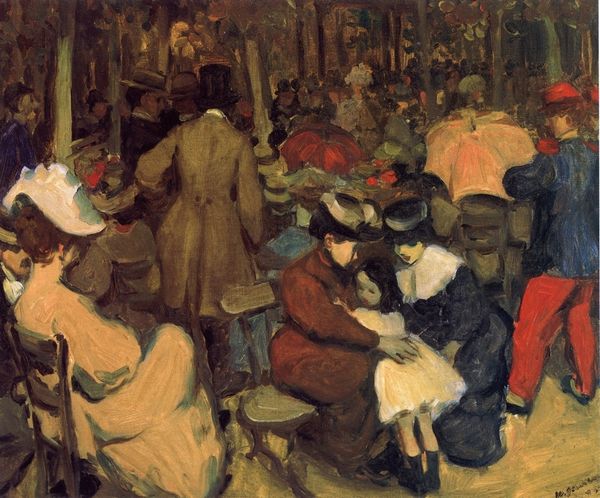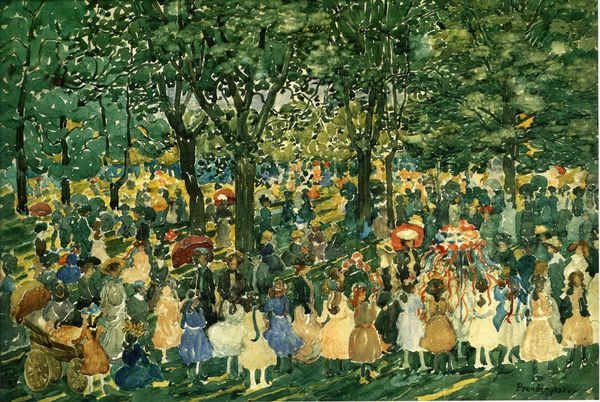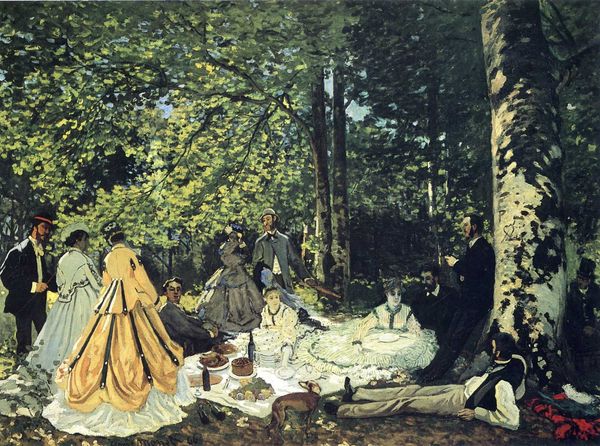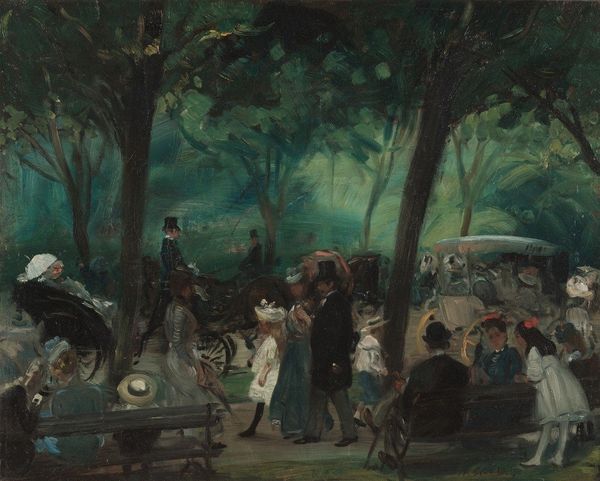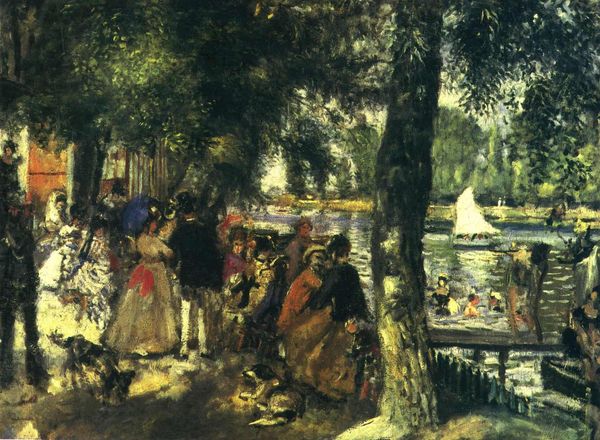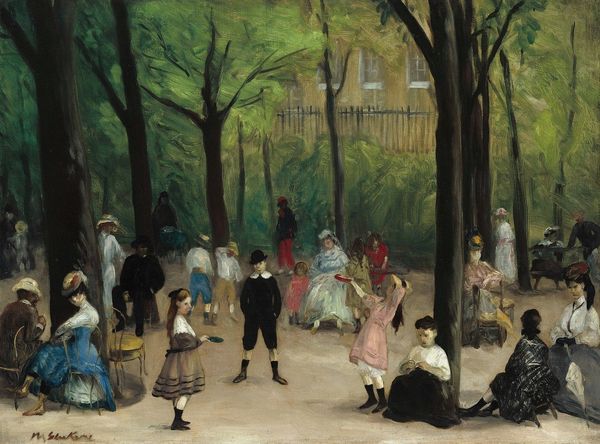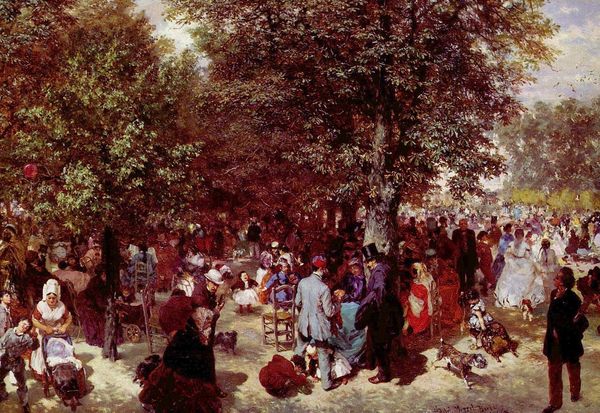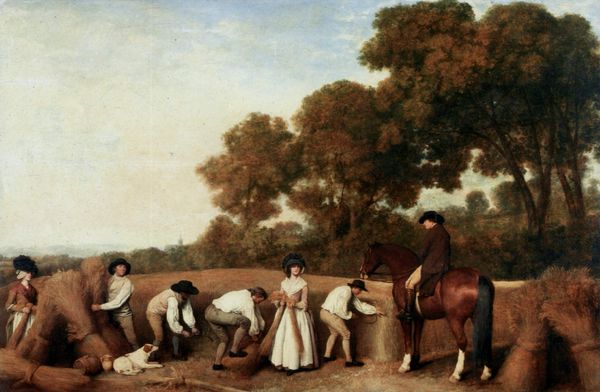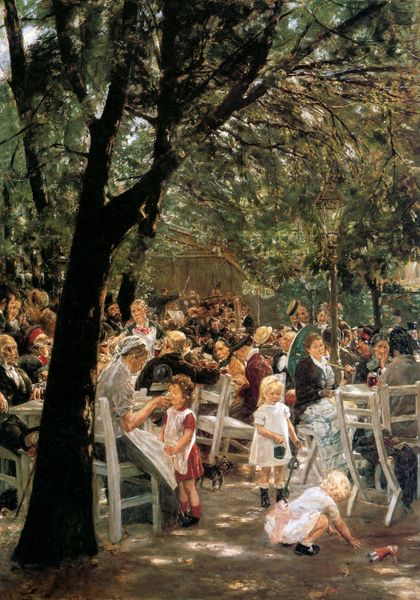
#
street festival
#
festivity
#
festival photography
#
culture event photography
#
spray can art
#
facial painting
#
bubble style
#
3d art
#
festival
#
chaotic composition
Dimensions: 76.2 x 118.1 cm
Copyright: Public domain
Curator: Manet's "Music in the Tuileries Garden," painted in 1862 and now hanging in the National Gallery, captures a scene of Parisian high society at leisure. Editor: It’s immediately striking, isn’t it? The faces emerge from the canvas in these dabs and dashes of paint, like socialites materializing out of the very air of the garden. There is also such an immediacy to it, despite being a carefully orchestrated tableau. Curator: Absolutely. Manet was keenly interested in depicting contemporary life and in portraying the rise of the bourgeoisie. You can see this focus even in his brushwork, moving away from precise detail and academic styles to reflect the speed and energy of modern life and leisure. Editor: And this leisure comes at a price. The painting is filled with these elegantly dressed figures, the men in their top hats, the women in their finery, displaying themselves in a carefully constructed performance of wealth. There’s a very visible class divide. Where did Manet position himself in all this? Curator: Precisely. Manet himself belonged to this social circle, but he observes it with a certain detachment. This painting marked his transition from simply reflecting his era, to an observation on society’s modes of consumption. This reflects in his depiction of materials: the silks, the wools, the wrought iron chairs. All signs of commodity. Editor: The brushstrokes also feel like they challenge that traditional craftsmanship and almost celebrate a lack of finish as if resisting an aesthetic of laborious detail. Also, many art historians identify people in this image as friends and acquaintances, but there are limits to who he included and to the representation of those at the fringes of Parisian Society. Curator: And he makes the method of creating this status visible through paint. His innovative brushwork emphasizes the physical qualities of the medium. But Manet did keep to conservative methods as well, purchasing paint, canvases, and materials from known suppliers and vendors that satisfied his style. Editor: I think it’s a space rife with unspoken rules. And the casualness of the scene might be deceptive. But Manet also reflects the fashion for art production by showing a leisure space. He reveals the making in what he captures. Curator: I find the intersection between production and culture of immense importance. Editor: Me too. What starts as a visual encounter soon becomes a lesson on cultural manufacturing, and that is the allure for me in “Music in the Tuileries Garden.”
Comments
No comments
Be the first to comment and join the conversation on the ultimate creative platform.
